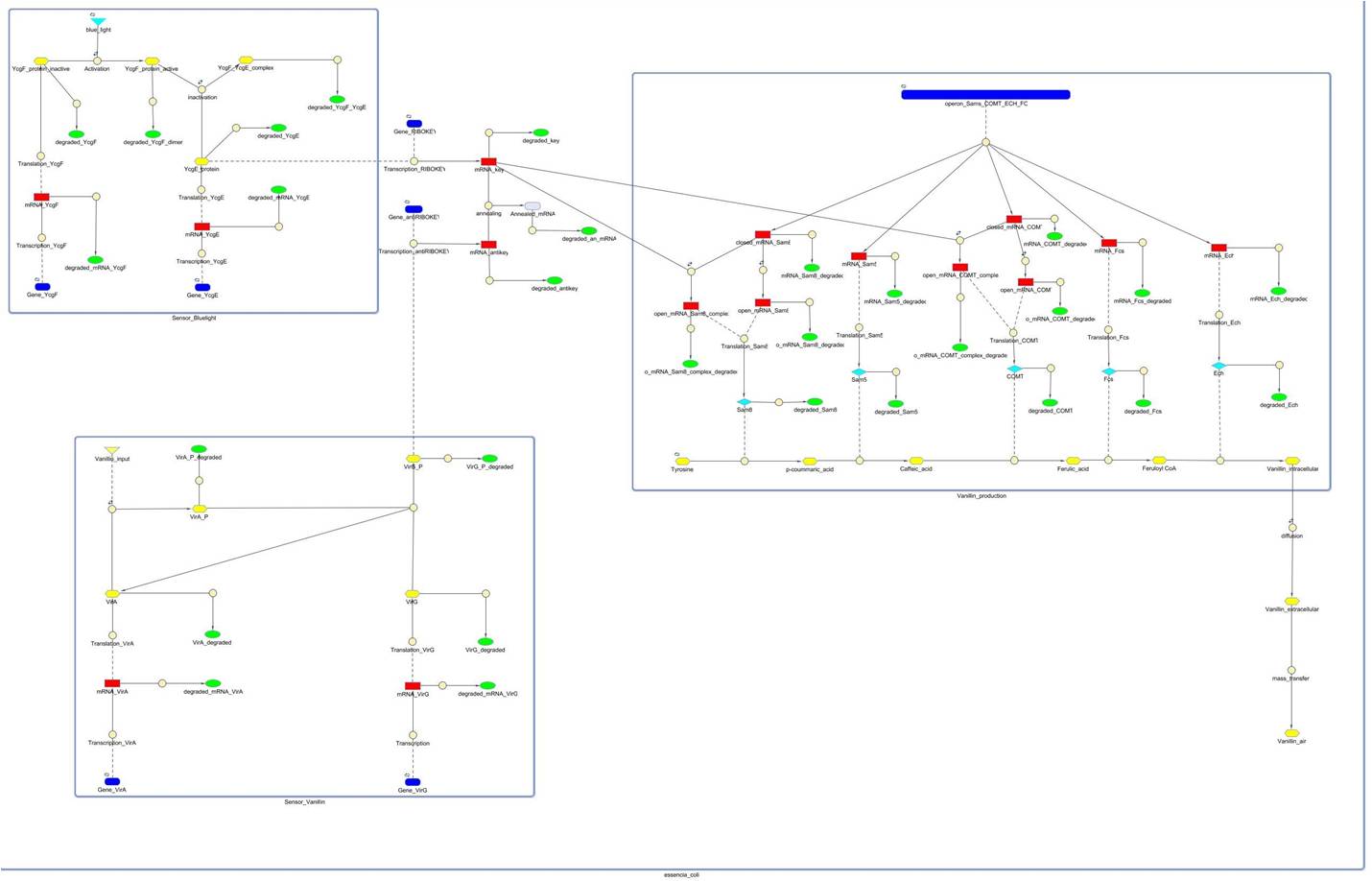Team:KULeuven/Integrated Model/Integrated Model
From 2009.igem.org
Integrated model
The complete model of our vanillin producing bacteria is shown in the next figure. The boxes around some species have no biological meaning they merely serve to distinguish between the different subcomponents of our system. Detailed information of the models of all the subcomponents can be found on their own pages.
ODE's
document optained using: iGEM2008/Team:KULeuven, Maarten Breckpot Simbiology2LaTeX ToolboxControl theory
Control theory is an interdisciplinary branch of engineering and mathematics, that deals with the behavior of dynamical systems. The purpose is to design a controller which controls the system so that it behaves as desired. The controller in our system will implemented in 'biological technolgy', it will be used to control the production of vanillin so that the concentration of (extracellular) vanillin is regulated to a certain value, dependent on the irradiation of blue ligth. There exists several criteria to measure the performance of the controller, some are listed below.
Stability
The system can be called stable if, no matter what the input signal (in our case: blue light) is, the output (extracellular vanillin concentration) will remain finite after an infinite amount of time.
Tracking problem
This criteria is an indication of how well the output will follow the wanted reference, we want the difference between the output and the wanted reference signal as small as possible. The more input signals the controlled system can follow the better the controller will perform on this criteria. We will see that with our controller we want to minimize the steady state error on a step signal as reference signal.
Disturbance rejection
Most controlled system are disturbed by other systems in their neighbourhood, in our case, imagine someone adding an extra amount of vanillin to the environment. We don't want to see these disturbances in our output of vanillin, meaning that the vanillin concentration remains at the desired level independent of disturbances. The disturbance rejection criteria indicates the ability of the system to reject those inputs.
Robustness
As with every model, our model of the bacteria is not perfect. Robustness is a property of a property, meaning if the system is stabilized in a robust way, it means that all similar systems that will also be stabilized by the same controller designed for the simulated model. It's possible to define a distance between to different models, now imagine a sphere around the nominal model of models how are still stabilized by the controller. The bigger the 'radius' of this sphere, the more robust the controller meets another criteria. It's then hoped that the controller will also stabilize the real system as it's assumed to be similar to the modelled system.
 "
"








